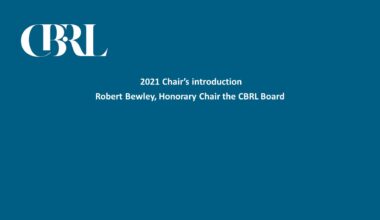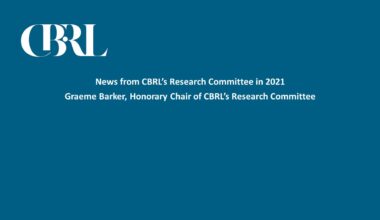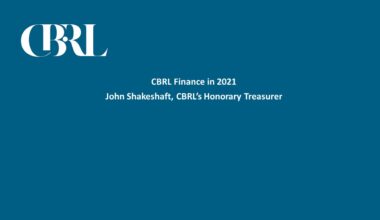Report from Jerusalem
Dr Toufic Haddad, Kenyon Institute Director
I’m going to cover the background to Kenyon Institute activities, renovations and a vision of the Kenyon Institute’s future.
Background of Kenyon Institute activities
One cannot ignore the fact that we operate in a very politically charged climate in East Jerusalem. The overall climate has been characterised by political gridlock that includes both Israel and Palestinian gridlock as well as intra-Israeli and intra-Palestinian gridlock. In this context, Jerusalem has become a lightning rod issue and Sheikh Jarrah, the neighbourhood where the Kenyon Institute (KI) is located, is very much at the frontline of this. In many senses, aspects of Israel’s attempt to overcome its internal problems led it to push the issue around Jerusalem and the settlements there which resulted in the 11-day mini war last May. For a good 40 days before this flare-up, the Sheikh Jarrah neighbourhood was subject to daily demonstrations of different orders. We felt the increased presence of settlers, army and cavalry. It also reminded us that what we’re doing here (CBRL at the KI) is very important and it’s very important to strengthen our activities. East Jerusalem’s academic as well as social community finds itself under forms of siege and great challenges. On top of this is the issue of Covid which led to great restrictions on mobility across the board and inequalities in the ways Israelis and Palestinians had access to the vaccines and other services. It’s worth noting also that Israel had the most restrictive access regime in the world with more than 140 days of full lockdown in four successive waves. Since 1st November this year, there is the possibility of the country being reopened but strong restrictions remain.
Renovations
This year’s renovations have resulted from initial work undertaken in 2020. To speak frankly, I think the KI suffered for many years from an assortment of challenges in part related to a lack of coordination between the UK and Jerusalem and indeed, the challenges of operating in this atmosphere (political atmosphere in Jerusalem) are considerable. This is in addition to historical forms of mismanagement, neglect and underfunding. I believe we’ve been able to take on these challenges since I came into position, and we’ve done large amount of renovations both on the physical infrastructure but also working to try to develop our programmes and policies. The KI used to feel dark and drab and was in need of maintenance; in 2020 we renovated the bathrooms, electrics, internet and painting. This year we continued with renovations to create a safe and secure space that provides the basic infrastructure both material, as well as virtual, to be able to embrace the potential of the KI in this neighbourhood and beyond.
The lower storage area used to be filled with a lot of archaeological equipment – it had to be cleared and gutted – it had suffered from a lot of water damage. Outside we were able to recycle some of the old tiles from a former library renovation several decades ago and we have used these outside. We created a lovely facility with an inner room that didn’t previously exist, and this will hopefully be used for projects and as a meeting room.
We completed a renovation of the upper classroom that was drab and falling apart and had sporadically been used as an artist’s studio. We repaired the ceiling, exterior added and added insulation; we created space around it the building so that it now has independent access. Inside, the space is clean and can be used as office space. We hope that this can generate future income and that we can form a strategic partnership with a tenant who could be part of our vision.
The library, which many of you know, is strategic to our overall plans. Previously, those familiar with the building would access the library via the main reception and the library was the only main area where you could work. Room 1, 2 and 3 were full of book stacks; we’ve now reconsidered how we use this space and have created a new entry and access. The central inner room has been cleared to create more seating space. All of the rare books and archives have been moved upstairs in the building. We had to redo the library floor because tiles were falling apart and we’re now in the final stages of finalising the carpentry which will feature beautiful tilework. The inner library room will have more workspace and comfortable chairs. To accommodate the new library expansion we appropriated two rooms from the hostel to provide space for rare books and an archive, oversized books and maps.
We’ve replaced the furniture in the rooms, purchasing furniture from local makers so that rooms are comfortable and secure. We’ve created outdoor meeting spaces and we’ve built a wall and installed security cameras at the back of the property to prevent our neighbours encroaching on the Institute. There are still some outstanding renovations including the kitchen and garden and we still need to upgrade our internet and some of our windows.
The KI’s future
Going forward, the infrastructure around the KI’s archives is developing and we will roll out programmes that activate this wonderful space, archives playing a key role within this. We also want to develop what we’re calling a hub-cluster model; essentially linking UK university departments and academics to the local academic scene, whether individuals or institutions, via CBRL. We see strategic relevance in investing in our audio visual capacity which has been very successful in recent years. We feel that with good AV potential, these new spaces will look great and have high impact . We’re also looking forward to establishing a Jerusalem doctorial research forum for existing PhD community.
Thank you to our donors – the British Academy, The Barakat Trust and Al Tajir Trust.














